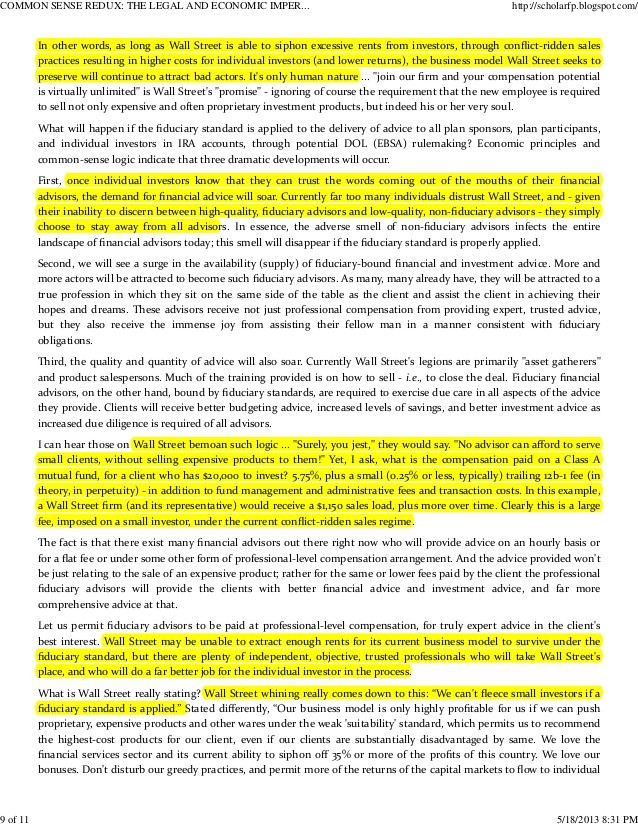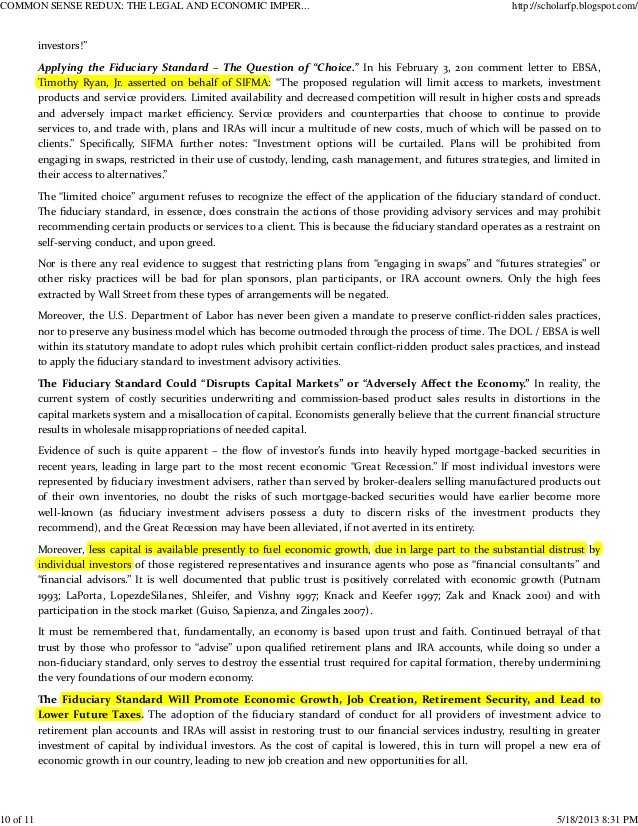The One Single Most Important Investing Concept a 401k Fiduciary Must Teach Every Employee Investor
Post on: 22 Июль, 2015 No Comment

A nybody ever see an inexperienced driver so intent on getting to fast as quickly as they can they skip all the in-between gears and go straight from first to fourth? How does it usually turn out? Rather than exploding like a rocket, the car more often than not decelerates, whimpering like an embarrassed hound.
It’s not unusual for 401k investors to make the same mistake. They’re all exciting about earning huge amounts that they immediately focus on investing. Investing is not where to begin. As we’ve written in previous articles, like fourth gear, it’s not as powerful as people think. But it does do one thing. It helps keep you from blowing you retirement engine – but only if you use it right.
If you must bother yourself with the particulars of investing (and, as earlier articles have shown, this is neither necessary nor advised), then you must become intimately familiar with one fundamental concept. This is a straightforward notion every 401k investor should know. The trouble is, at many employee education meetings, before making sure everyone is comfortable with this idea, too many advisers too easily slip into industry jargon. This leaves the typical 401k participant wide-eyed or, even worse, asleep. In the end, without a clear understanding of this plain fact, the average person will look at investing as a heavy albatross, forever weighing on their shoulders, forever flummoxing their chance for peace of mind.
For more information, read: New Study Reveals Three 401k Strategies More Important than Asset Allocation
So, a word of warning to all those souls brave enough to tread into the morass of investing (a deep voice with an ominous echo-effect would be appropriate here): Abandon Hope All Ye Who Enter Without a Full Embrace of This Simple Truth: Great Returns Only Come Through Taking Great Risks.
Since the mid-twentieth century, the concept of the relationship between risk and return has represented the cornerstone of investment theory. Risk and return are to investing what supply and demand is to economics.
But the risk-return relationship did not appear out of nowhere. For centuries, it has been applied in a common sense manner throughout all cultures. Isabella would not take the huge risk to her royal treasury had not Columbus convinced her there were riches waiting for the successful voyager. Alexander the Great would not have risked his reputation had there not been a world to conquer. In a story that appears in three different religions, Abraham would not have risked his son’s life had the reward of Heaven not been so substantial.
Closer to home, think about the risk-return relationship when it comes to getting paid for doing a certain job. For the most part, jobs that entail more risk also come with a larger wage. This is why coal miners get paid more than bus drivers, who get paid more than janitors. Of course, sometimes the greater pay fails to justify the increased risk. “I like to compare smart risk to silly risk,” says Elle Kaplan, CEO & Founding Partner at Lexion Capital Management LLC in New York City. “Silly risk is if you offer me a possible return of $200 for crossing a minefield. The reward is not worth it. Smart risk is me crossing a street when the walk signal tells me it is my turn to cross. The risk is small and controlled with returns that are worth it.”
Perhaps the most obvious use of the risk-return relationship can be found in casinos everywhere. Most of us know a roulette wheel when we see one. Anyone familiar with the movie Casablanca might remember Risk’s cold-hearted compassion for the newlywed couple seeking asylum. When they are down to their last three chips, he instructs them to bet it all on 22 – twice. You don’t have to be a rank sentimentalist to know that hitting an individual number at the roulette table can pay pretty well. (Hitting it twice in a row after leaving your original winnings on the number can pay even better.)
In fact, mathematically, the reward for correctly guessing the individual number the roulette wheel lands on earns you a payout of $35 for every dollar you wagered. Don’t worry about the house, though. The actual odds of guessing the correct number are 38:1 (on an American wheel with a double-zero, 37:1 on a French wheel with no double-zero). So, over time, the House has an average profit of $3 (well, that’s an American House, the French House only has a profit of $2).
How does this show us the relationship between risk and return? It’s simple. Compare the relative odds and payouts of guessing an individual number (cited about) against the odds of guessing whether the digit will be odd or even. To keep things easy, and since we dont publish in France, we’ll just reference an American roulette wheel. There are a total of 38 numbers on the wheel, but two of them are zero (“0” and “00”). The rest are numbered consecutively from 1 through 36. This means there are eighteen odd (or even) numbers meaning your chances of winning are eighteen in thirty-eight or 9:19. In other words, if you choose to bet “Odd” or “Even,” you’ll win just about (but not quite) every other time you play. Compare this to a similar bet made on an individual number, where you’ll win once for every thirty-eight times you play.
You can see the “Odd/Even” bet is a lot less risky than the individual number bet. We would therefore expect the payout for the “Odd/Even” bet to be much less than the payout for the individual number bet. Lo! And behold! It is. When your “Odd/Even” bet wins, the croupier pays you one dollar. When your individual number bet wins, the croupier, perhaps with less than a smile, pays you thirty-five dollars.
Bigger risk. Bigger return.
It’s that simple.

Investments work the same way. In the short-term, stocks are much riskier than bonds, but stocks offer much better long-term returns. Likewise, in the short-term, bonds are much riskier than cash, but bonds generally offer better returns.
Notice the qualifiers “long-term” and “short-term.” These are important considerations. For most, saving for retirement is a long-term process. That, in many ways, is more important than any other investing axiom. “The risk an investor takes when not investing for higher growth is that your investments may not be able to pay for your financial needs in the long term,” says Kaplan. “When we retire, our portfolios become our paycheck. The investor should take an appropriate amount of smart risk in order to allow their money to grow to its full potential.”
Since the inception of 401k plans there’s been a problem of participants being too conservative with their investments. The 2006 Pension Protection Act tried to address this with Qualified Default Investment Alternatives, but investor fears were exasperated by the 2008/2009 market debacle. There are new techniques, however, that can address this age-old question. Vince Allegra, managing director in the Retirement Plan Advisory group at Mesirow Financial in Oakbrook Terrace, Illinois has found “the best way to create real and meaningful change is through the plan design itself, specifically utilizing features like automatic enrollment and automatic increases.” When Allegra comes into a situation where he sees a significant amount of plan assets in fixed instruments, he’ll often suggest the plan committee consider a complete plan re-enrollment into suitable default funds.
Readers interested in learning more about creating an Investment Policy Statement might want to read this: Adding Categories: A Sample of a New and Improved 401k Investment Option Menu
Andrew Schrage, CEO of Money Crashers in Denver, Colorado, says, “One metaphor that is particularly helpful when explaining the risk-return relationship is one used in the world of physical fitness – no pain, no gain. In order to build a 401k plan with solid returns (the gain) you have to be willing to assume some risk (the pain). I have seen some examples of 401k plan holders being too conservative with their investments. These folks should understand that a 401k plan is a long-term growth vehicle, and especially for those younger in age, the plan will have time to hopefully recover from any short-term losses from equity investing.”
It’s critical 401k investors keep their eye on the (long-term) prize and understand how the risk-return relationship relates to their short-term fears and their long-term needs.
Interested in learning more about this and other important topics confronting 401k fiduciaries? Explore Mr. Carosa’s book 401(k) Fiduciary Solutions and discover how to solve those hidden traps that often pop up in 401k plans. The book also contains a series of chapters on how to create an investment policy statement that defines a set of menu options consistent with the concepts outlined here.
3A%2F%2F0.gravatar.com%2Favatar%2Fad516503a11cd5ca435acc9bb6523536%3Fs%3D96&r=G /%














